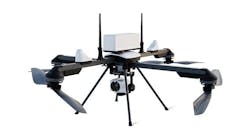Aug. 07--Last month, the U.S. Navy made history when it aced the landing of an unmanned drone aboard an aircraft carrier off the Virginia coast.
It was a technological feat that could tax the skill of a trained pilot, and elated Navy brass who saw it as a glimpse into the future of naval aviation.
But on Tuesday a British software safety analyst appeared at NASA Langley Research Center in Hampton to offer a cautionary lecture on the challenges in developing software to make unmanned aircraft safe to operate in congested civilian airspace.
"There's a real difference between producing something that you can demonstrate works once from having the confidence it will work under all circumstances so you can put the lives of tens or hundreds of passengers in aircraft at risk," said John McDermid, a professor of software engineering at the University of York. "And rightly the FAA and their equivalents in Europe and in the rest of the world have very stringent requirements about how confident you are about how these things work."
McDermid was at NASA Langley the same week the center planned "sense and avoid" flight tests for computer software that might one day help integrate unmanned aircraft into the national airspace. According to NASA, the project employs two Langley aircraft to demonstrate how the software allows one aircraft to sense and avoid another.
McDermid noted that military drones operate under different rules than their civilian counterparts -- in particular by closing the airspace in which the military drones will fly ahead of time.
As far as national civilian airspace, he said, Congress has told the FAA it must allow autonomous flight within a couple of years.
"I honestly doubt it's possible," McDermid said. "Or would only be possible in very limited circumstances."
The FAA is working on rules that would integrate unmanned aircraft into national airspace, and estimates the U.S. could see as many as 30,000 drones in the sky by 2020. Privacy advocates and others are pushing for the FAA to provide safeguards.
McDermid said the challenge in developing sense and avoid software technology is that software is less able to respond to abrupt changes as rapidly or as well as humans.
"Trying to design something that will cater to all possible situations is actually very difficult," McDermid said. "That's why it's a lot harder to make these things work than people sometimes believe."
He estimates having operational safety software aboard unmanned aircraft in a controlled airspace "is still decades away."
Copyright 2013 - Daily Press (Newport News, Va.)

